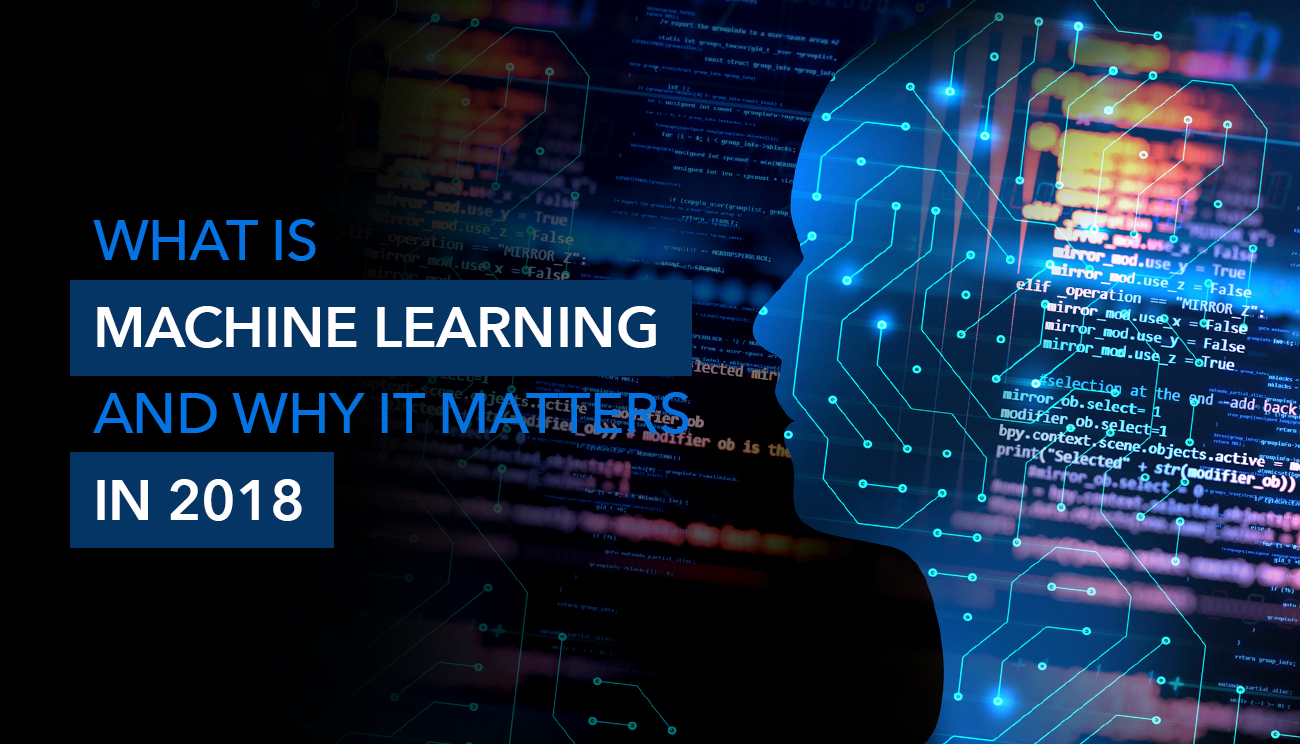Machine Learning (ML) and Artificial Intelligence (AI) are 2018’s buzzwords, but what is Machine Learning, how does it differ from Artificial Intelligence and why does it matter? At its most basic, both ML and AI are about computers learning things for themselves. In a way, this is similar to what humans do. Think about a newborn who understands nothing – yet as early as six months, a child will start comprehending simple words (much earlier than scientists originally thought). ML and AI is built on this idea of potential or learning, but let’s look at these concepts in more detail.
Artificial Intelligence vs. Machine Learning
Essentially, explains this YouTube video, AI is a broad area of computer science that makes machines seem like they have human intelligence. The idea was first coined back in 1956 by John McCarthy.
A few factors have led to AI becoming the next big thing including:
- Huge amounts of data are now being created every minute (90% of the world’s data has, in fact, been generated in the past two years).
- Increased computer processing; computers can now make sense of all this data.
- Tech giants and venture capitalists are keen to infuse the markets with cash, as they have bought into the idea of AI.
So, what is Machine Learning then? Machine Learning is one way of achieving Artificial Intelligence. It brings together computers and statistics to build algorithms that allow computers to learn new tasks. It allows the computer to use experiences to learn by seeking statistical patterns in the data. An example of Machine Learning would be teaching a computer to distinguish between dogs and cats – for example, working out that cats have shorter noses and dogs come in a larger variety of sizes.
Crucially, it’s the computer and not the programmer who works out the algorithm separating cats from dogs. The more data the computer receives, the more accurate its prediction. Some examples of ML include the following: text and speech recognition, spam filters, online shopping recommendations and credit card fraud detection.
Why Machine Learning Matters in 2018
Machine Learning has been referred to as ‘statistics on steroids’. It’s a disruptive technology that’s expected to grow in leaps and bound in 2018. Let’s look at some potential trends.
1. Machine Learning App Development for Robotics
The merging of ML and robotics will lead to increased capabilities in 2018. Managing distribution centres, such as those of Amazon, will utilise ML and robots to help address logistical issues.
2. Machine Learning for Content Development
Firstly, expect much more advanced chatbots. And secondly, ML will be able to create content for businesses to communicate with their clients – editing will also be automated. ML apps will also be able to do extensive research prior to any content development.
3. Machine Learning for Predictive Marketing
ML apps will be able to analyse click-through rates of emails, analyse marketers’ discussions with clients and engage with other predictive marketing functions.
4. Image Recognition on Social Media
Automated tools will have the potential to scan massive data-sets on various social media platforms, such as Instagram or Twitter, to identify unique patterns.
5. DevOps for Data Science
IoT devices – that is, physical devices that have connectivity – are generating vast amounts of data, but the environment is complex for developers because there are two environments: cloud-based, which refers to apps or services that are available to users on demand via the Internet from another provider’s servers, and local. DevOps will address this issues via ML and Data Science.
So now you know what Machine Learning is and where it’s heading, how can you get involved in this exciting field?
How Do I Get Into Machine Learning in 2018?
An article in Medium states that Python, according to Data Scientists, ‘leads the pack’ with 57% of Machine Learning developers using it. One important reason is that powerful statistical and numerical packages exist in Python for data analysis (such as PyBrain, NumPy and MySQL). Anyone comfortable with the Python programming language can use it as a tool to organize, process, and visualize data. Although plenty of other programming languages are useful in the field of data science, such as SQL and R, Python is one of the more versatile, with over 125,000 third-party Python libraries available as a resource. Of course it depends on your project, but Python is probably a good place to start.
In conclusion, we’ve covered what Machine Learning is and how it forms a subset of Artificial Intelligence. We’ve looked at some important Machine Learning trends and we’ve discussed why learning Python might be a good place to start. If you want to learn Python in 2018, HyperionDev offers a six month online Software Engineering Bootcamp, which includes Python as part of its back-end programming.


